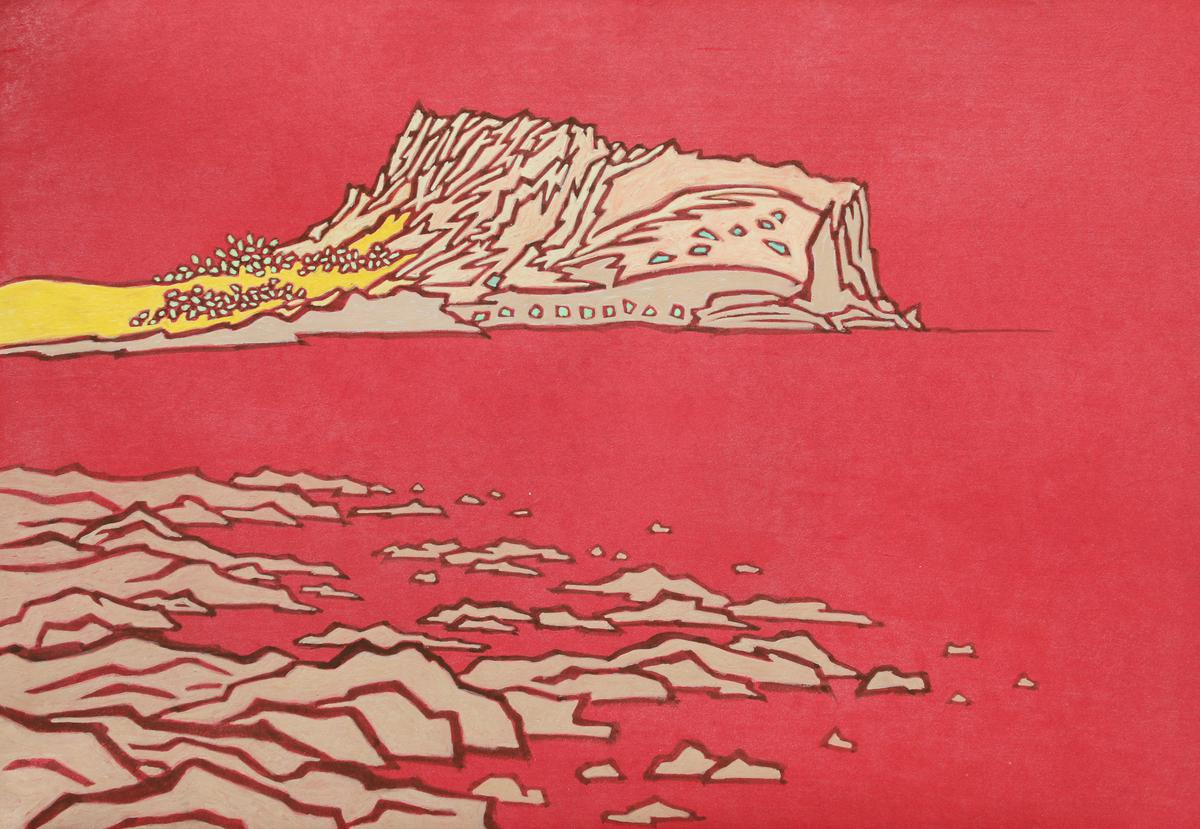Seven artists from Jeju Island in South Korea tell stories of resilience through varied mediums in this Chennai exhibit
Seven artists from Jeju Island in South Korea tell stories of resilience through varied mediums in this Chennai exhibit
In Jeju, South Korea’s largest volcanic island, both picturesque and populous, a group of women (some aged even upto 80 years) dives into the sea to gather shellfish like sea urchins and abalones. Called the Jeju haenyeo, these women divers harvest for upto seven hours a day without the help of an oxygen mask, making bird call-like sounds as they surface. They represent the silent resilience of Jeju, an island that is geographically volatile. Back here in Chennai, at InKo Centre’s physical space, The Gallery, amorphous shapes reminiscent of the human form that is perhaps mid-dive, are melded into a wooden, hollowed-out canvas by artist Anh Jin-hee: a striking, abstract tribute to these very women who embody the intangible cultural heritage of the island. Similarly, Oh Seung-eik’s realistic landscapes that boast defined brushstrokes, and minute detailing take us to Mount Hallasan, a shield volcano which is also the highest point in South Korea. Thus, facets of Jeju island, that are testament to a sense of community and perseverance make up the display that has works of seven artists who live and work in Jeju, in varied mediums.
The idea was to open the gallery with a display that presses on the importance of hope, while also being informative, says Rathi Jafer. While natural marvels form the majority of the display, canvases that capture a simpler time also make appearances. “We wanted to show the unique emotions of Jeju, including its history, culture and natural environment,” says Anh Jin-hee, adding, “India and Jeju are similar in that they have numerous gods. We would like to take this opportunity to make another familiar and close relationship.”
While portraying the elements that make Jeju what it is, Jin-hee says that the attempt was to open a window into the lives of the people of the island as well. Take Ko Eun’s Accept, for instance: the child-like innocence of the work comes through in its playful colors and familiar characters. Her rendition of an oreum (a defunct volcanic cone that is usually seen around a mount, there are 368 of them in Jeju) is starkly different from Park Sung-jin’s take which shows a snow-laden trail dotted by volcanic rock formations.
“The oreum, stone walls, wind, storms, sea, sun, and even the changing climate have become materials and subjects here. And among the people who embrace the sea, wind, stones, sun, and typhoons surrounding the island, are these artists,” adds Jin-hee. Lee Su-mok’s series titled Embrace the Light, is a deviation from the rest of the frames, in that it attempts to show the Jeju of today. Executed interestingly on Korean rice paper, the laminated frames have an ephemeral quality to them. In one, a bridge is the protagonist, set against a grainy purple backdrop.

Anh Jin-hee’s artwork
| Photo Credit: SPECIAL ARRANGEMENT
Nature in Jeju can tell a lot of different stories. “In the painful stories about Jeju, Mt. Halla becomes a strong support that gives peace,” says Jin-hee. The mountain is also a spiritual symbol for the people of Jeju, says Jin-hee. “Hallasan is also diverse in its expressions, which change throughout the seasons and shows different appearances when you go around the island of Jeju.”
Into the Light is on display till August 28 at The Gallery, InKo Centre, Adyar, and at Prism, their online gallery

























